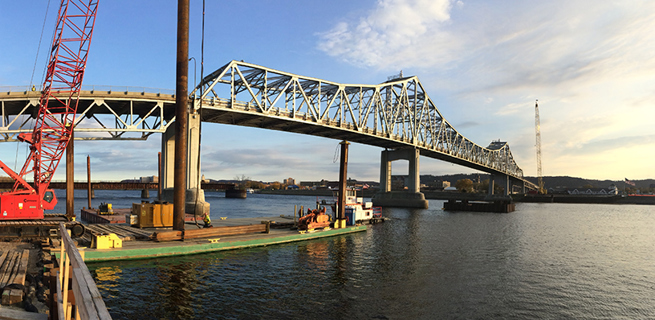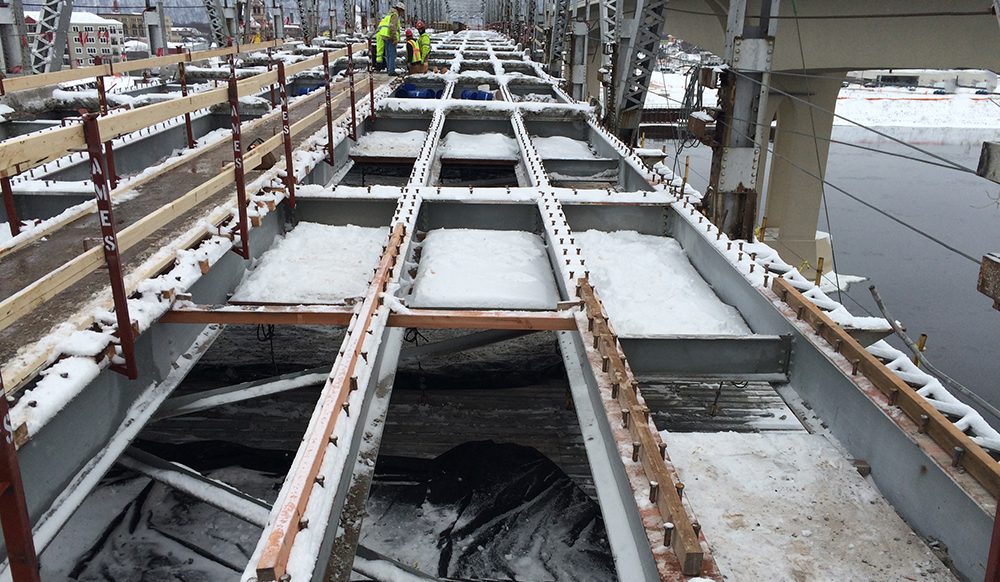Winona Bridge
Winona, Minnesota
Chapter 152 of Minnesota’s Bridge Improvement Program legislation requires redundant design for any bridges in the program that are deemed structurally deficient or fracture-critical. But what if the bridge also represents the only surviving example of a pre-1946 cantilever through truss bridge in the state and has been targeted for the National Registry of Historic Places?
To answer that question, the Minnesota Department of Transportation hired Michael Baker’s Minneapolis team to serve as the final design Engineer of Record, taking on the challenge of extending the bridge’s service life another 50 years, preserving the historical integrity of this 75-year-old bridge and satisfying the requirements of Chapter 152 state law.
To save the bridge, which carries Trunk Highway 43 over the Mississippi River from Wisconsin to Minnesota, the project partners decided to build a parallel bridge that would carry inbound traffic and allow the historic bridge to carry only outbound traffic. Then, considering the state’s legislative mandate, our team added internal redundancy to all of the bridge’s fracture-critical tension members, among other innovations, all while avoiding an adverse effect to the bridge’s historic character.
Our team generated complex 3D finite element models to perform a fracture critical member analysis, an internal redundancy analysis and a fatigue life analysis of the historic bridge. The model considered construction sequencing of the strengthened members to capture the correct locked-in stresses. We also investigated numerous innovative ways to reduce the loading on the bridge to impact as few of the bridge members as possible while also ensuring another 50 years of life.
With the rehabilitation completed, Winona residents are now able to cross their iconic bridge without load restrictions – and with a new peace of mind that comes from the strengthening and addition of internally redundant tension members.

Collaboration
“This project was MnDOT’s first major project utilizing the construction manager/general contractor (CM/GC) procurement method. We worked closely with MnDOT, the Cultural Resources Unit and the CM/GC contractor to determine the most cost-efficient, constructible plans and details for this complex rehabilitation and reconstruction.”
- President, Infrastructure



